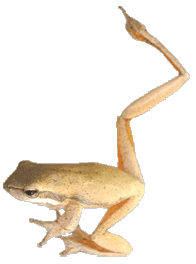What are Nautiloids?
 Michael Anissimov
Michael Anissimov
Nautiloids are a subclass of cephalopod mollusks, related to other cephalopods such as squid and octopuses. Only a few modern species of nautiloids exist, such as the Chambered Nautilus, but nautiloids are an extremely important fossil group, with specimens dating back to 515 million years ago, during the Late Cambrian era. Nautiloids were the first cephalopods, and were one of the first "advanced" animals to appear in the Cambrian, with relatively large brains and nervous systems.
The heydey of the nautiloids was during the Paleozoic era, from about 515 to 251 million years ago. During this time, they were the top predators of the seas, and developed a wide range of shell forms. Nautiloids were the first cephalopods, evolving from simpler molluscs and occupying the predator niche. In just 50 million or so years, they went from only a few millimeters in length to 8 meter (26 ft) giants like Cameroceras, thought to have been the biggest animal on the planet at the time when it lived, the Ordovician period, about 450 million years ago.

Like most mollusks, nautiloids all have a shell, which evolved to be straight at first, then curved. This shell consists of numerous internal chambers, or camerae, separated by walls called septa. These distinct chambers are produced by the animal as it grows. The nautilus always occupies the last of the chambers, called the living chamber, and has a fleshy strand of tissue that passes through the chambers caused a siphuncle. The siphuncle helps the nautilus remove water from the chambers of its shell, which allows it to attain buoyancy by closely matching its internal density to that of the surrounding sea water.
Like other cephalopods, nautiloids snatch up food using their tentacles and consume it with their sharp internal beak. They see the ocean around them using two lens-free eyes that operate using similar principles to that of pinhole cameras. These unique eyes are important evolutionary intermediaries between the light-sensitive patches found in animals like planarians and the more sophisticated lens-based eyes of other animals like fish. They have helped assist scientists in understanding how a complex organ like the eye can evolve incrementally, with each intermediate step having an immediate adaptive benefit
AS FEATURED ON:
AS FEATURED ON:











Discuss this Article
Post your comments